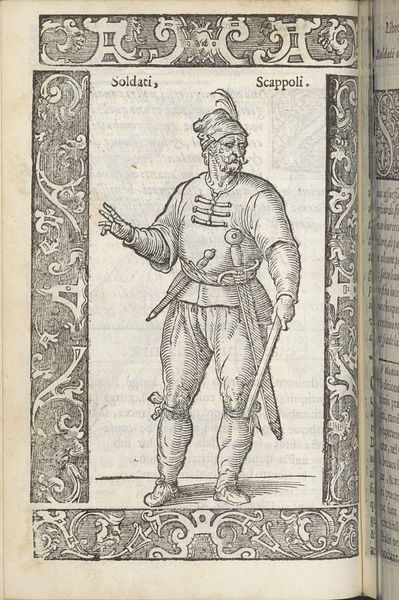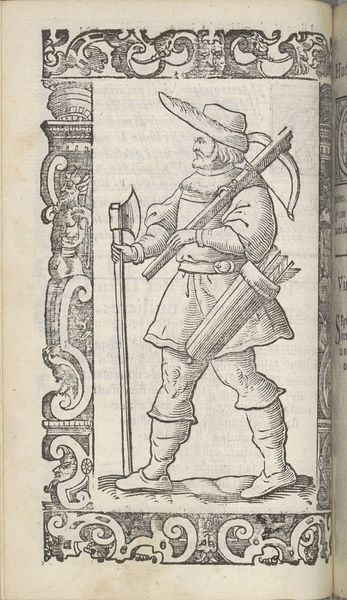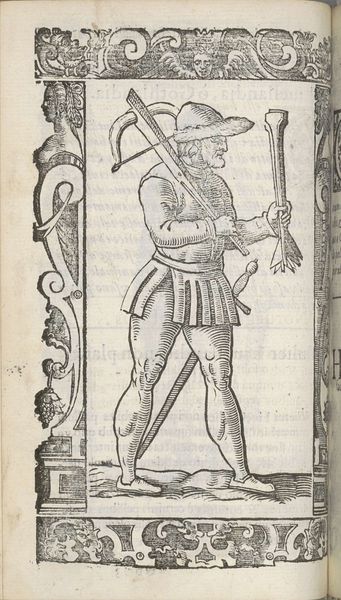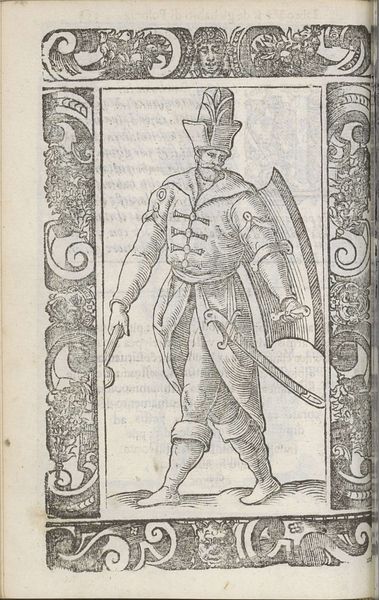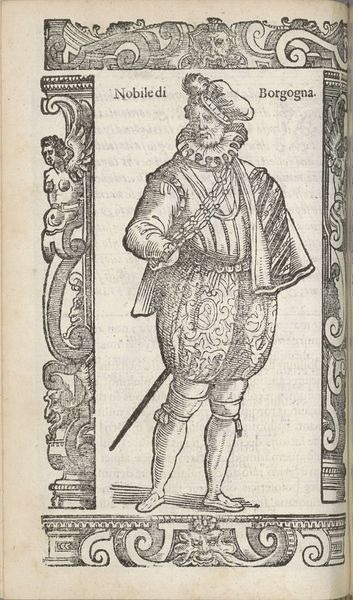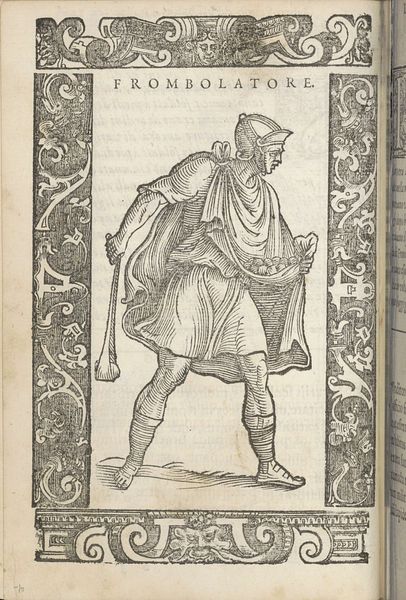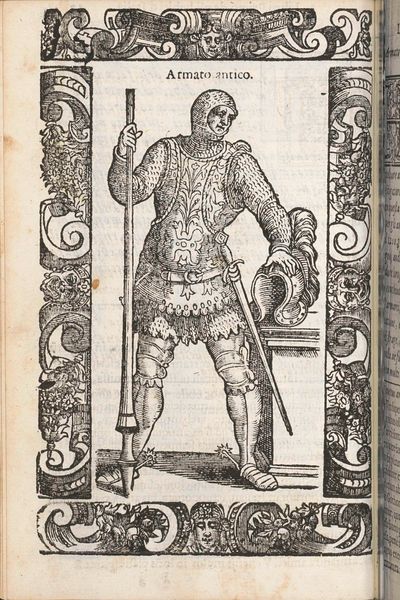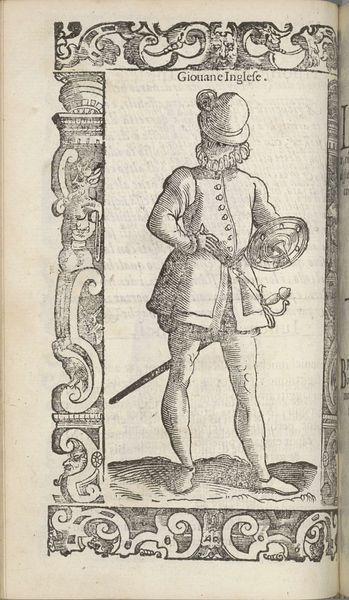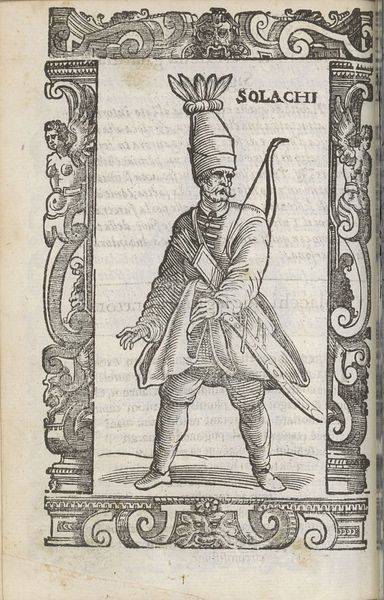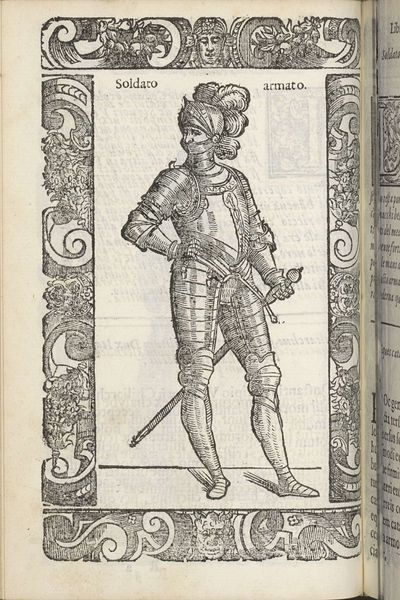
drawing, print, paper, engraving
#
portrait
#
drawing
# print
#
old engraving style
#
figuration
#
paper
#
11_renaissance
#
pen-ink sketch
#
line
#
pen work
#
northern-renaissance
#
engraving
Dimensions: height 167 mm, width 125 mm
Copyright: Rijks Museum: Open Domain
Curator: Here we have "AZZAPPI," an engraving by Christoph Krieger, dating back to 1598. Editor: The intricacy of the line work grabs you right away. It has a certain weight to it despite being so detailed and small. There's a sort of austere quality in the figure’s pose and in the stark contrasts between dark and light that defines his shape, clothing, and the background pattern work. Curator: Indeed. Krieger was working during a fascinating period where printed imagery was increasingly influential, acting as both disseminator of information and assertion of social standing. We see this dynamic at play, reflecting an engagement with foreign cultures viewed through a specifically European lens. The subject’s garb and weaponry clearly denote his ‘otherness’. Editor: Exactly. The focus is less on him as a man and more as a representation, even a caricature. Look at how the engraver employed repetitive marks to imitate a multitude of fabric textures: dense linear hatches depict the cloth folds, patterns for rich brocades, and contrasting patterns in the background. The lines are really working hard here! Curator: Which underscores the political aspect, as such visual representations helped shape early modern European perceptions of people and lands beyond their immediate purview. Remember too, that images such as this one served not just as aesthetic objects but, critically, as elements of a broader socio-political narrative defining the burgeoning European identity in relation to others. Editor: I'm particularly drawn to the hands – or the one visible hand, anyway. It’s awkwardly rendered, isn’t it? This suggests either the engraver didn’t have access to someone from this culture or his focus lay elsewhere… on the costuming as evidence of other cultures' resources and materials for import/export perhaps. It highlights how "accurate" visual data gets reshaped through power dynamics involved in image production. Curator: A crucial observation. The material conditions of its production were deeply intertwined with how the represented figure was then consumed. AZZAPPI reflects 16th century European engagement with global exploration but, viewed through the lens of power, ultimately reveals more about the gazer than the gazed upon. Editor: A beautiful point, a single sheet of paper, ink and labor, a global power play… It gets you thinking. Curator: Absolutely. It prompts reflection on the politics inherent in how art depicts culture, especially during times of exploration.
Comments
No comments
Be the first to comment and join the conversation on the ultimate creative platform.
